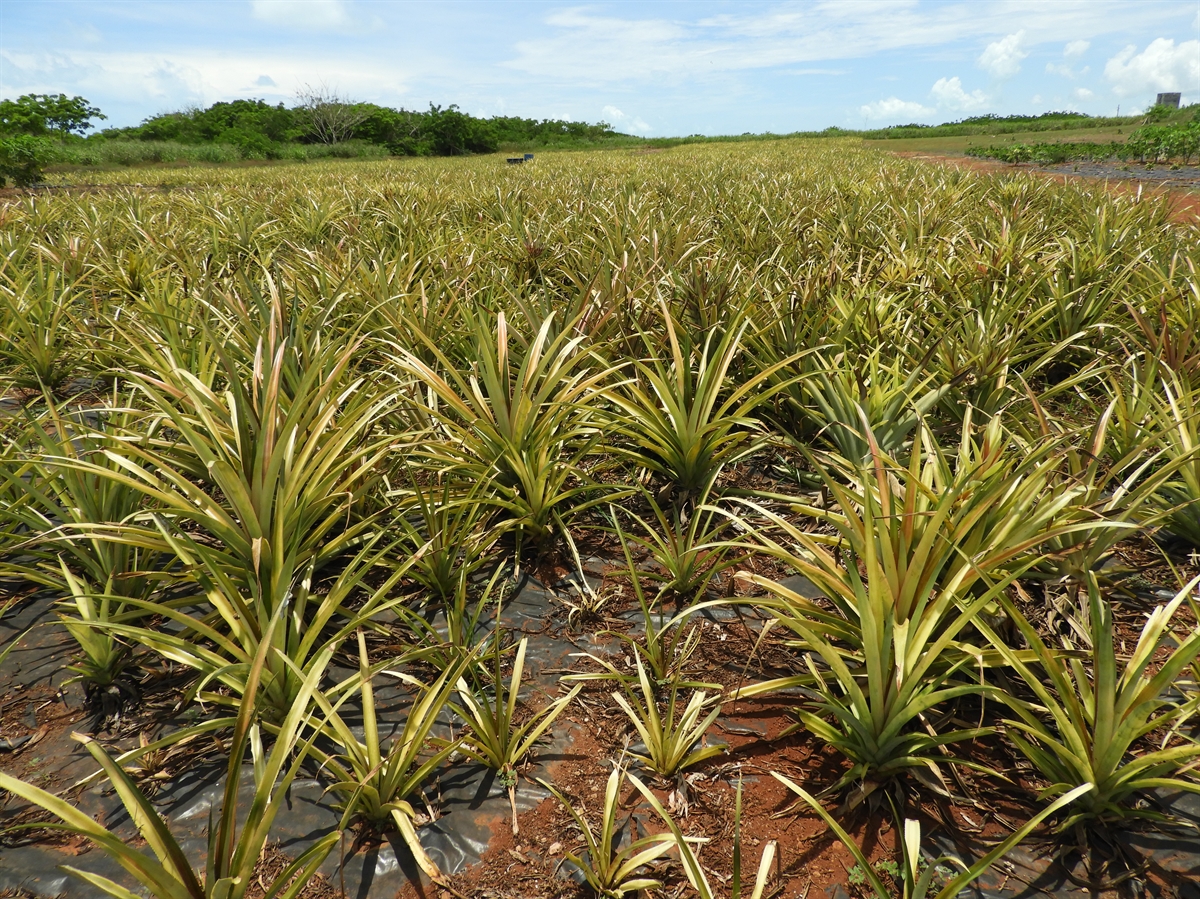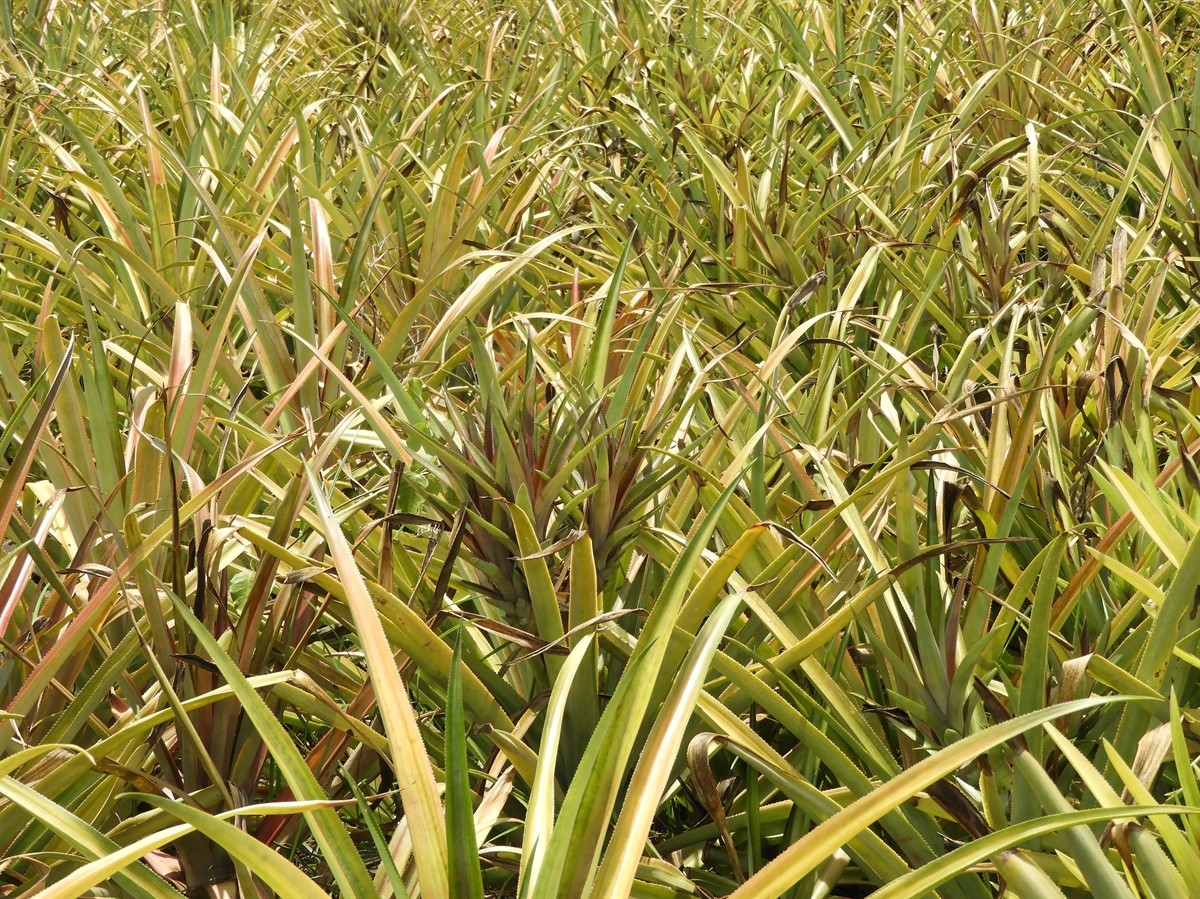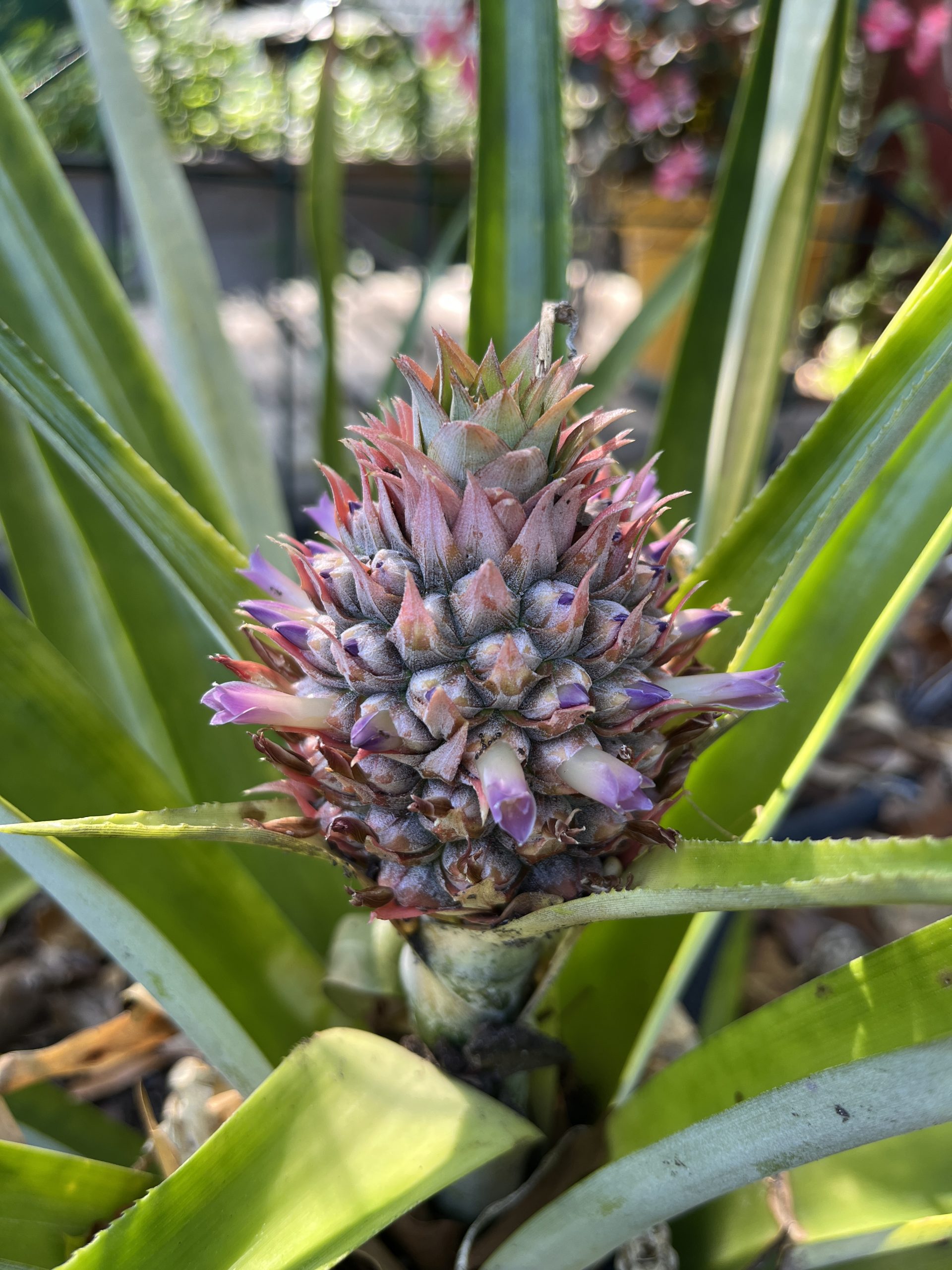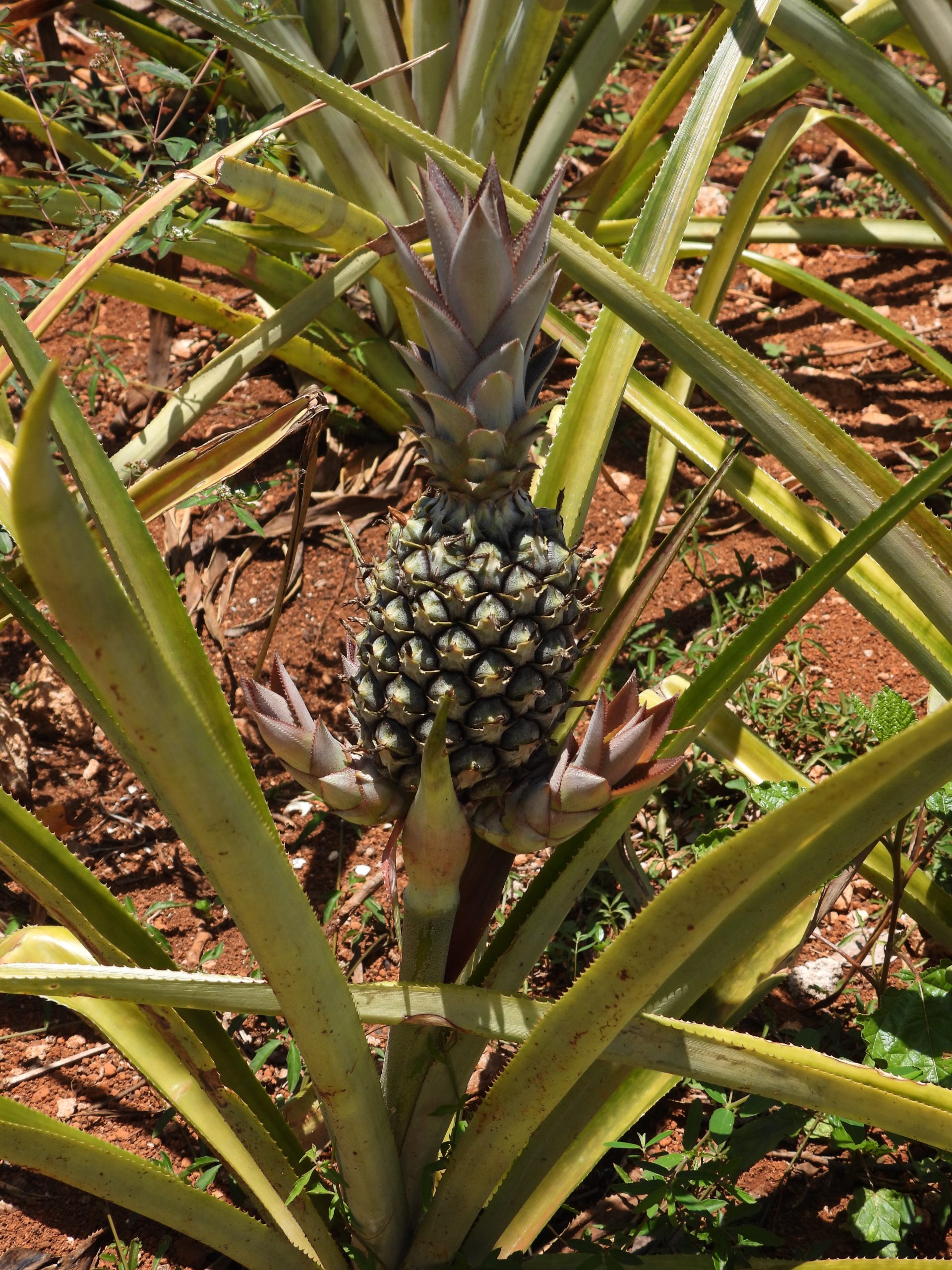Habit: Ananas comosus grows as a perennial without discernible stems up to 50 cm (excluding inflorescence) in height. The green and/or red leaves are in a rosette forming a series of cups at their base that can hold water and detritus. The leaves parallel veined, lanceolate, serrated/spiny margin to 4 cm wide at the base and 1 m in length with a cusping leaf apex.
The complete, perfect, zygomorphic, sessile flowers, each with a subtending bract, are arranged in a spike. The lower bracts are leaf like while the upper are tightly appressed to the peduncle. There are 3, green, unfused sepals in the calyx that exceed the length of the bracts with one strongly winged. There are 3, green to purple, unfused petals in the corolla. There are 6 stamens that are shorter than the petals. The ovary is inferior with 3 locules. The fruit is considered a multiple/syncarp where the carpels fuse together to form a single fleshy unit.
Ananas comosus is cultigen that never produces seeds. Reproduction is asexual from pups that form at the base of the plant.
Habitat: Ananas comosus grows in Human Altered environments (gardens and farms).
Distribution: Ananas comosus is NOT native to the Lucayan Archipelago but is grown on many islands particularly Eleuthera and Andros. It is native to South America but is now grown globally in tropical and subtropical areas.
Medicinal/Cultural/Economic usage: Ananas comosus is not known to be used medicinally in the Lucayan Archipelago.
Ananas comosus is grown for its sweet and tasty “fruits”.



